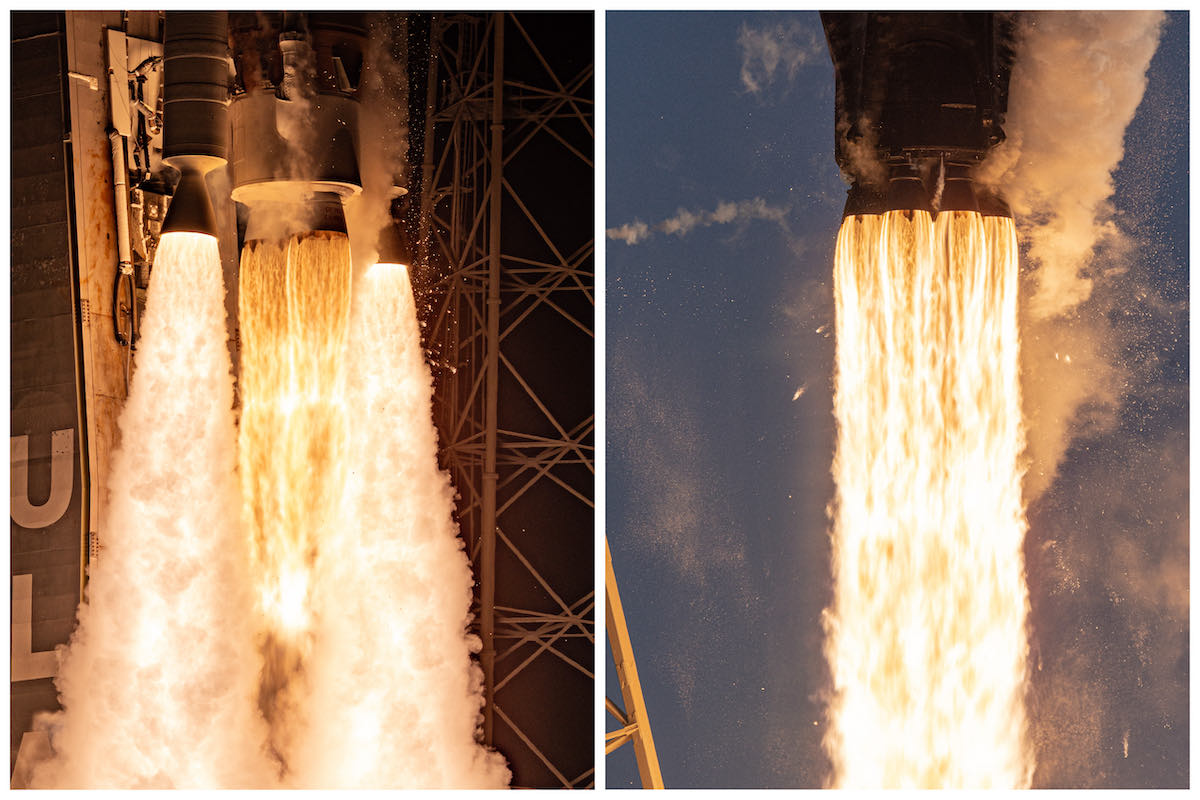
The launch of a SpaceX Falcon 9 rocket Aug. 4 occurred 12 hours and 39 minutes after the liftoff of a United Launch Alliance Atlas 5 rocket at Cape Canaveral Space Force Station, the shortest turnaround between two orbital-class missions at the Florida spaceport since Sept. 7 and 8, 1967.
The back-to-back missions in 1967 included a Thor Delta G rocket and an Atlas Centaur rocket that launched less than 10 hours apart. The Thor Delta G rocket launched a recoverable spacecraft called Biosatellite 2 with a host of biological research experiments, and the Atlas Centaur sent NASA’s Surveyor 5 lander to the moon.
The two launches Aug. 4 also marked the first time Cape Canaveral hosted the launch of two space missions on the same calendar day since Nov. 11, 1966.
The launch doubleheader began with the liftoff of ULA’s Atlas 5 rocket from Space Launch Complex 41 at 6:29 a.m. EDT (1029 GMT) carrying the U.S. Space Force’s SBIRS GEO 6 missile warning satellite. SpaceX launched a Falcon 9 rocket from Space Launch Complex 40, a mile-and-a-half (2.5 kilometers) to the south of pad 41, at 7:08 p.m. EDT (2308 GMT) with the Korea Pathfinder Lunar Orbiter mission.

The Space Force-run Eastern Range at Cape Canaveral has worked to reduce the time required to reconfigure range safety infrastructure between launches.
The shortened turnaround time is largely made possible by the introduction of autonomous flight termination systems on rockets, which would issue an automated self-destruct command in the event of an in-flight failure. Older flight termination system designs require a range safety officer on the ground to track the rocket and, if necessary, issue the destruct command through a radio uplink signal.
The first batch of photos below show the liftoff of ULA’s 194-foot-tall (59-meter) Atlas 5 rocket at dawn. Two strap-on solid rocket boosters and a Russian-made, kerosene-fueled RD-180 engine generated 1.6 million pounds of thrust at liftoff.







The next group of photos shows the launch of SpaceX’s 229-foot-tall (70-meter) Falcon 9 rocket with the Korea Pathfinder Lunar Orbiter mission. The Falcon 9 was powered off the launch pad by nine kerosene-fueled Merlin 1D engines producing about 1.7 million pounds of thrust.







Email the author.
Follow Stephen Clark on Twitter: @StephenClark1.
from Spaceflight Now https://ift.tt/5Slc38L
via World Space Info







0 comments:
Post a Comment